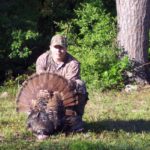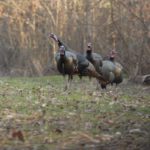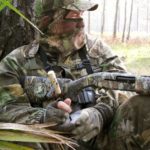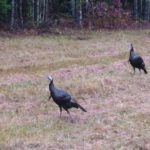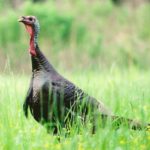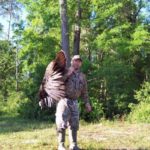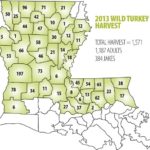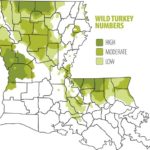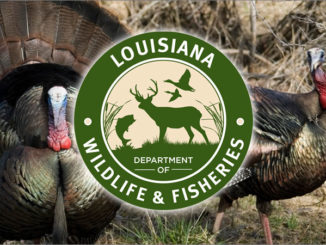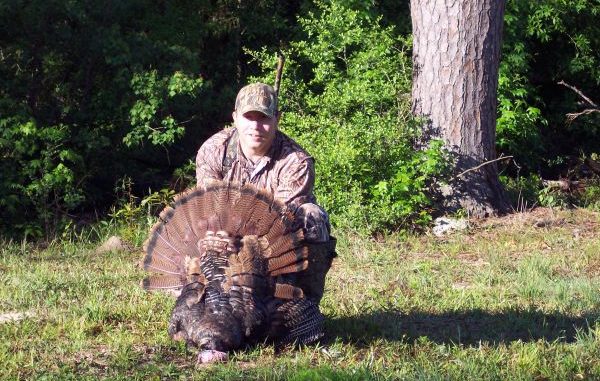
You don’t need large acreage to score a big gobbler, if you know how to manage your property and employ the right strategy.
My return to turkey hunting after a 15-year hiatus was truly haphazard.
I had recently leased a 150-acre tract of land near Folsom for deer hunting and was scouting for deer sign in late winter trying to learn the lay of the land. What I discovered was startling: The deer lease was full of turkey sign, and I spotted several turkeys during my scouting trips.
With spring fast approaching, I thought a little turkey hunting might help me get more familiar with the new lease, but realistically my expectations were fairly low.
I was in for a real surprise.
The weather forecast for opening day was not good. Rain for several days had most rivers on Lake Pontchartrain’s north shore above flood stage, and the creek bottom on the lease would surely be flooded.
I decided to postpone my first hunt for a few days and wait for better weather conditions after a cool front passed through. The morning I chose was crisp and still, and the waters had receded back into the creek.
My first day returning to turkey hunting would be a reminder of the skills necessary to be successful and how elusive the wild turkey can be. It was a learning experience riddled with rookie mistakes, including getting set up too late, not adequately staying concealed and calling too often.
The two gobblers that had roosted in the creek bottom had me busted before the sun rose.
My next hunt was different. I was in the woods well before first light in a natural ground blind that I had set up on the previous hunt. As light began to filter throughout the woodlands, an old gobbler let out a thunderous call on his roost that nearly knocked me off my seat.
The hunt was on.
I had a hen decoy in a small clearing within sight of the roosting area. The gobbler continued to sound off, but I was careful to use only soft tree yelps sparingly to keep him focused on the decoy.
The waiting was excruciating for 30 minutes, as the old tom stayed locked in place on the tree branch. But, finally, he opened his wings, twitched his tail and began his descent to meet up with the fake hen.
I let him hit the ground, and then raised my shotgun and took him at 30 yards.
My return to turkey hunting was now complete.
Later on in the season, I was fortunate to take another mature gobbler to fill my tags.
While my experience might be considered just plain, blind luck, successful turkey hunting on small tracts of land normally takes a lot of hard work and patience, as well as some luck. But it can be fruitful.
If you are limited in the acreage available to hunt turkeys, you might want to take some advice from an expert who is in charge of managing wild turkeys in Louisiana.
Jimmy Stafford is the Louisiana Department of Wildlife and Fisheries Wild Turkey and Resident Small Game Program leader, and he agreed to share his wealth of knowledge about wild turkeys and what it takes to be successful on small tracts of land.
Stafford said he believes that, for a particular property to hold huntable turkey populations season after season, there are certain required elements that the land must possess.
“Turkeys need food, shelter and nesting and escape cover,” he said.
The property you hunt might have all or some of these characteristics. The good news is that you can take steps to improve the tract of land that you hunt.
So what is the perfect combination of habitat necessary for a small tract of land to hold turkeys?
“You need a good combination of standing timber for roosting, some hardwoods, fields or openings, food plots of clover or wheat and harassment must be kept to a minimum — such as ATV use, walking around and busting birds,” Stafford said.
Following are other recommendations for small-tract hunters.
1. Find property in areas of the state that already have good turkey populations
Many parts of Louisiana do have suitable habitat for turkeys and other areas have low populations. Hunters should concentrate their efforts in areas that have moderate or high populations.
Stafford provided a map of Louisiana that shows the area of the state with the best turkey populations as well as a parish-by-parish map of reported turkey kills during the 2013 turkey season.
If you find the parishes that have good densities of turkeys and have access to property within these areas to hunt, you are off to a good start.
2. Find a specific property that has suitable habitat to hold turkeys
Just because your property is in a parish with lots of turkeys does not mean it will hold a single turkey if the habitat is not suitable.
However, with the right habitat elements, your small tract of land could be a turkey paradise, Stafford said.
“Mature timber at least 6 to 8 inches in diameter or bigger is critical for turkeys to roost in,” he explained. “Creek bottoms are also important because they have hardwoods that provide mast for turkeys to eat.”
Of course, turkeys also like openings.
“Openings such as pipelines, food plots, pastures and fallow fields are a critical habitat element,” Stafford said. “You want the openings to be about three to five acres. The openings should be maintained so that the grass is about calf deep. Turkeys rely on their sight to keep them alive, and they like to be able to see long distances.
“The openings provide the turkeys with ideal areas for feeding and strutting. Secluded openings are better than those in high activity areas.”
3. Manage the property for turkey habitat
Whether your property has many or few required habitat elements, sound management of your property will improve it.
Stafford said this is especially true for small tracts of land, where habitat management can really pay dividends.
“The first thing you should do is open up some food plots, and plant clover and wheat,” Stafford said. “The food plots that you plant for deer will benefit turkeys, as well. After deer season, the wheat will form seed heads during the spring that the turkeys will eat. Clover planted in the fall will also be available during the spring for turkeys.
“In upland areas, prescribed burning, under the direction of an experienced forester, is hard to beat to create great turkey habitat. Also, mowing or disking also helps. Some selective logging on a heavily timbered property will improve nesting and escape cover, but avoid logging regular roost sites.”
4. Adjust your hunting strategy for small tracts
In order to be successful on small tracts of land, a unique turkey-hunting strategy is necessary. Techniques that might work on larger tracts might not be suitable when your options are limited.
Here are some suggestions that could pay off:
• Low impact hunting — If you are going to have success on small properties, Stafford believes you have to limit your activities in the woods before and during the season, or the turkeys will leave the property.
“Once deer season ends, try and leave the property undisturbed up until turkey season opens,” he said. “Do not ride ATVs, target shoot, cut timber or plant food plots.”
Hunters should limit scouting and blind preparation to the midday hours, when turkeys are out feeding.
Once the season starts, you will not be able to use the run-and-gun method many hunters use in locating and hunting turkeys on larger tracts.
Instead, you will need to develop an ambush strategy similar to stand-hunting for deer; that is, finding areas turkeys are using, sneaking into a predetermined area or blind that has been set up in advance and waiting for the turkeys to come to you.
After the hunt, sneak back out, keeping disturbance to a minimum.
You should also rest the property for a few days in between hunts by limiting your time in the woods to the prime times and best weather days.
• Vary your hunting patterns — Try and mix things up as to hunting times and paths you take to go hunting.
For instance, have several blinds set up in advance to keep the turkeys guessing.
Another technique that can pay dividends after you several unsuccessful morning hunts is to make an evening hunt close to where you have located a roost.
An afternoon hunt will also help you locate the travel corridors used by turkeys returning to the roost.
• Go easy on the calling — On small tracts of land, Stafford encourages keeping calling to a minimum.
Turkeys have keen hearing, and all you really want to do is let them know a hen is in the area. Soft yelps and clucks are usually all that are necessary.
In fact, aggressive calling on small tracts could work to your disadvantage as the season wears on and gobblers get warier.
Also, use various types of calls so gobblers hear different sounds.
• Use natural blinds — I have found that you should stay well hidden and keep the turkeys guessing. The last thing you want is for a turkey to see you while he is on the roost.
A natural ground blind works very well, using native brush found in the area. I sit on a camo shell bucket that keeps me at the right height and keeps my gear dry. I use camo dye-cut material that I support on surrounding vegetation or tomato sticks.
If you use a purchased ground blind (i.e., a tent), put it out long before the season so turkeys get used to it. It is also a good idea to cut some natural brush to put around the ground blind to break up the edges of the blind.
• Use a decoy or two — I have found that on small tracts, you should try and set up close to roosting areas (100 to 300 yards) and have the gobblers come to you.
I use two hen decoys and one jake in the clearings and food plots where I have ground blinds set up.
